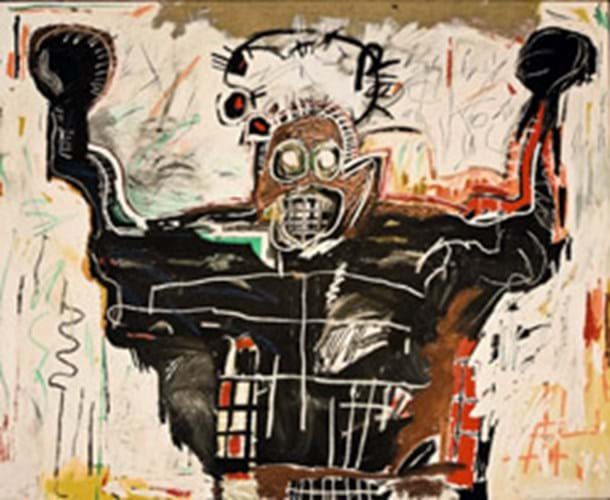
Billionaire property mogul and art collector Eli Broad bought four works at Sotheby's evening auction last week, but told journalists afterwards: "This was a half-price sale."
As happened during London's contemporary art week in October, vendors were asked to lower reserves set months earlier. This meant that across the board lots were knocked down well under estimate and those that carried guarantees often proved costly for the auctioneers.
Sotheby's evening sale on November 11 saw a $108.9m (£72.6m) hammer total. This was well short of the $202.4m pre-sale low estimate and 60 per cent down on the equivalent sale last year when Sotheby's saw their highest ever total for any sale at the time, netting a premium-inclusive $315.9m (£158m).
Alex Rotter, head of Sotheby's New York contemporary art department, said: "The global financial turmoil obviously has brought a correction. The evening sale, which was put together during the summer in a very different economic environment, brings us back to the levels of the autumn of 2006."
They found buyers for 43 of their 63 lots, but 16 of the 20 guaranteed pictures that sold went for under their low estimates. Sotheby's had already anticipated losing $17m in guarantees from these contemporary sales in their third quarter earnings statement.
Philip Guston's Beggar's Joy from 1954-55 last sold at auction for $1.6m (£1.07m) at Christie's New York in 1996. As an indication of the levels of growth in the market seen over the last decade, this time it carried an unpublished estimate thought to be $15m and a guarantee that was possibly even higher. It was allowed to sell at $9m (£6m) to a lone bidder.
One guaranteed lot that failed to sell was Roy Lichtenstein's Half Face with White Collar from 1963, estimated at $15m-20m. Consigned by an Italian dealer and depicted on the cover of the catalogue, it attracted no bids.
The top lot was Yves Klein's mixed media relief Archisponge (RE 11) of 1960 sold on the phone at $19m (£12.7m). The estimate was in excess of $25m.
It was a similar story at Christie's evening sale the following day. Their $98.5m (£65.7m) hammer total was well under half the $227m pre-sale low estimate and down 65 per cent down on the premium-inclusive $325m (£162.5m) made last autumn as the market approached its zenith.
Fifty-one of the 75 lots found buyers, but over half went under estimate.
While no bids emerged on the sale's potential star, Francis Bacon's study for self portrait from 1964 estimated at $40m, the sale's top lot was Gerhard Richter's Abstraktes Bild (710) oil on canvas from 1989, which made $13.2m (£8.8m) against a $10m estimate.
Another Richter, Ozu (597) from 1986, estimated at $10m-15m, went unsold.
Two of the brighter points of the sale were Jean-Michel Basquiat's Untitled (Boxer) from 1982, which attracted two bidders and sold at $12m (£8m), making the second highest price at auction for the artist, and No. 2 by Yayoi Kusama that made an auction record, selling for an above-estimate $5.1m (£3.4m).
Overall, nine of the 39 guaranteed lots failed to sell, but 21 of the 30 that got away sold under their low estimates.
But as was seen in London three weeks ago, the sale demonstrated the slowdown in bidding for Andy Warhol. Only one of the five works on offer managed to sell, and three of the unsolds were guaranteed with a combined low estimate of $8.3m. The one that got away was The Statue of Liberty from 1986 that made $1.9m (£1.27m) against a $2.5m-3.5m estimate.
Christie's auction had received much publicity prior to the sale because of the 16 post-War drawings being sold by the former chief executive of Lehman Brothers Dick Fuld and his wife Kathy. The ex-head of the now collapsed investment bank was reportedly given a guarantee of at least $15m but, with three unsolds, the hammer total for the collection came in at $11.6m (£7.72m).
The highest price was for an untitled ink on paper from 1946 by Barnett Newman at $2.6m (£1.73m).
Phillips de Pury - whose business model is heavily dependent upon the success of the contemporary art market - had almost entirely eliminated guarantees for their evening sale on November 13, offering only two lots in which they had a financial interest.
However, the sale was badly hit by the market downturn, totalling $8.07m (£5.38m) against a $23m pre-sale low estimate, with 21 of 51 lots unsold.
By Alex Capon




